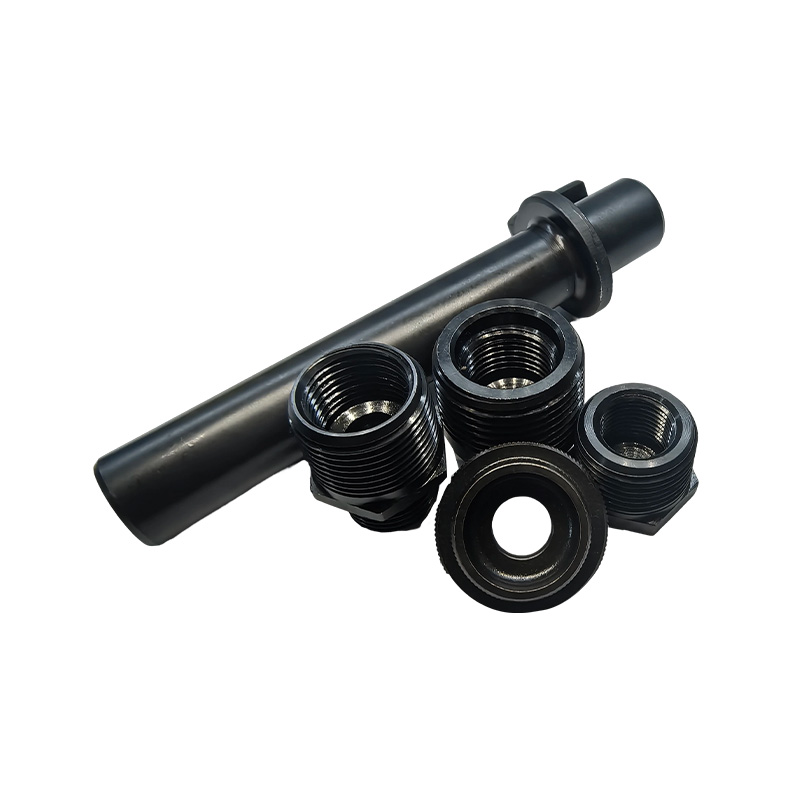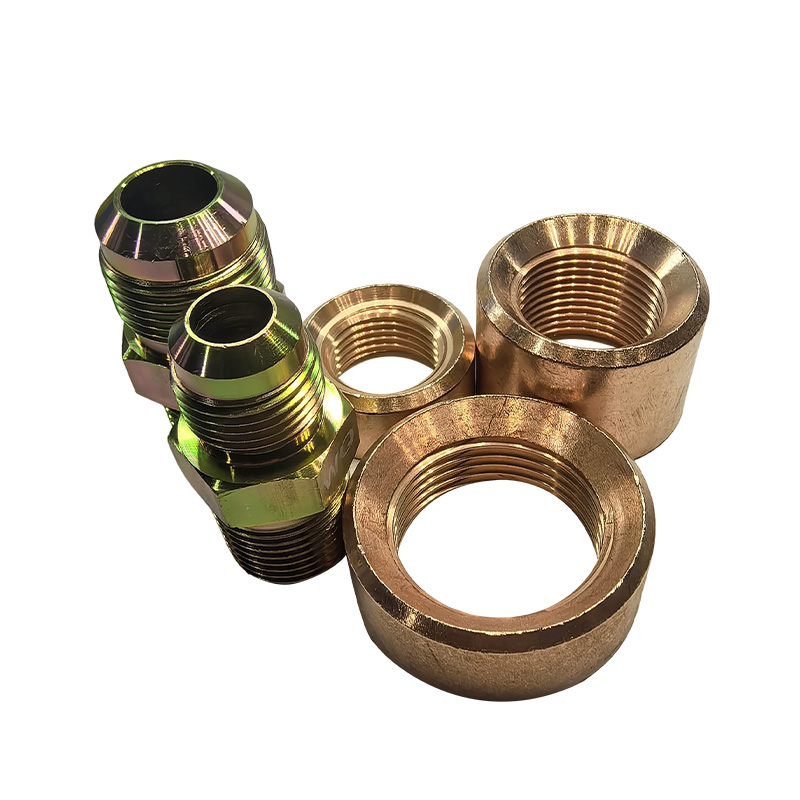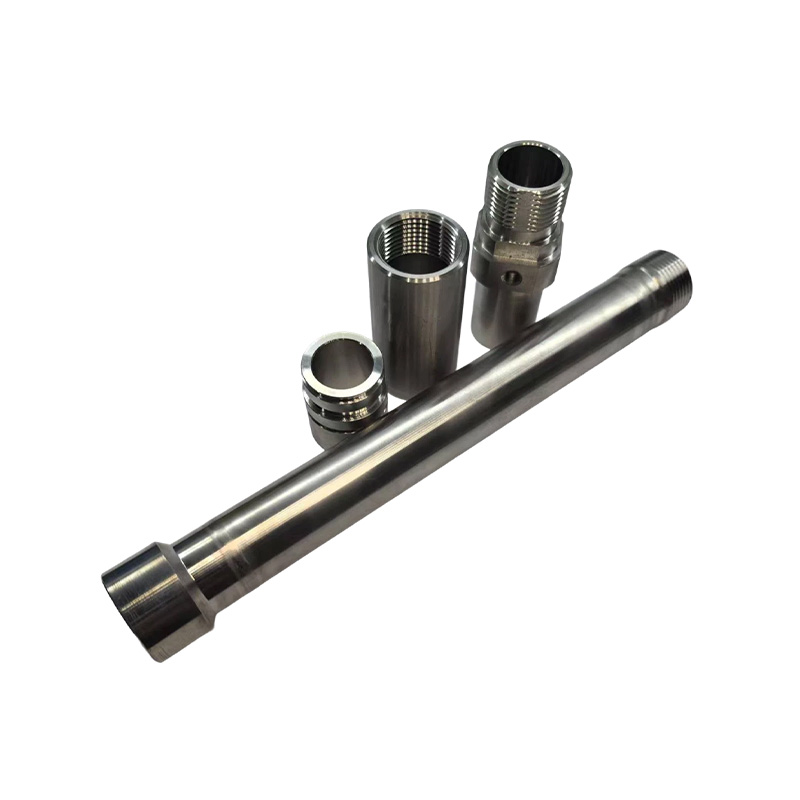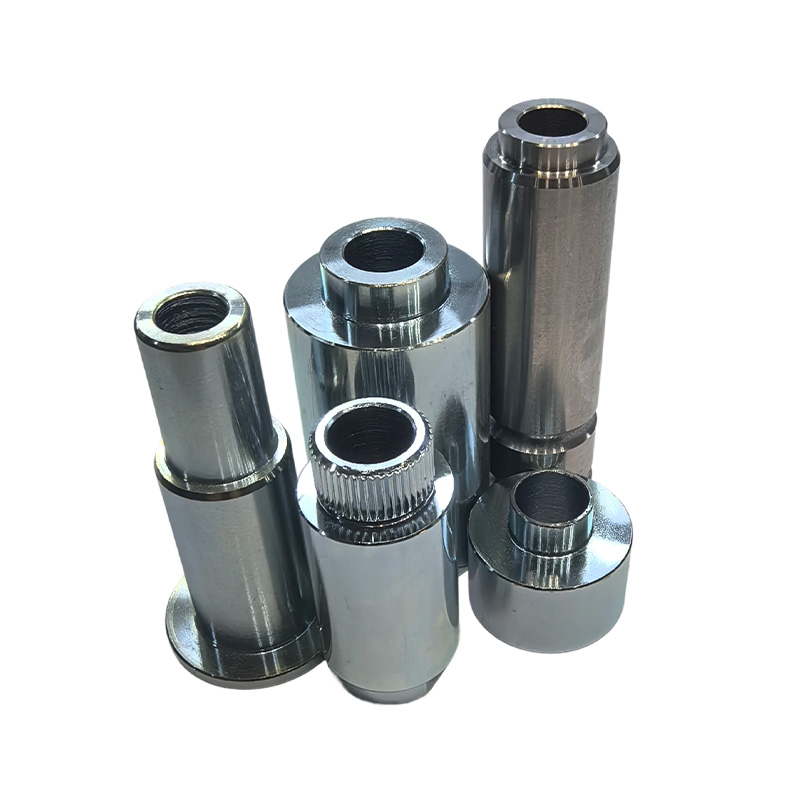Water Heater Connector Nuts: The Dual Guarantee of All-Copper Material and Precision Craftsmanship
Release Time : 2025-10-11
The Stability of All-Copper Material
The core advantage of water heater connector nuts lies in the chemical stability of their all-copper material. Copper naturally forms a dense oxide film in the air, which effectively prevents further corrosion of the metal inside, especially in humid, high-temperature, or acid-base environments. For example, home water heaters are constantly exposed to steam. Copper nuts ensure that the joints remain rust-free and free of foreign particles, thus maintaining a clean and unobstructed plumbing system. This makes them an ideal choice for critical connections such as water heaters and heating systems. User feedback indicates that water heater joints equipped with all-copper nuts remain as bright as new and leak-free after three years.
The Reliability of Precision Craftsmanship
All-copper nuts are typically forged in one piece. Their hexagonal shape allows for easy wrench tightening, and their internal threads provide precise engagement, accommodating connector sizes from 1/2 inch to 1 inch. Their capped design provides a double-locking mechanism, making them ideal for connections that require frequent disassembly or are subject to vibration. For example, in kitchens and bathrooms, where water is constantly in contact, copper nuts offer far superior sealing compared to iron or alloy fittings, effectively preventing leaks caused by aging joints. This precision craftsmanship not only improves installation efficiency but also reduces subsequent maintenance costs through seamless joints.
Water Heater Shafts: A Breakthrough in Corrosion Resistance and Efficient Heat Transfer
Industry Benchmark in Corrosion Resistance
Water heater shafts (such as the heat transfer pipes in heat exchangers) are often made of oxygen-free copper or phosphorus-deoxidized copper, offering corrosion resistance far exceeding that of stainless steel. Experimental data shows that copper shafts maintain stable operation in sulfuric acid concentrations below 75%, hydrochloric acid at any concentration, and sodium hydroxide solutions below 20%, whereas stainless steel heat transfer pipes are susceptible to pitting corrosion in these media. Furthermore, copper's thermal conductivity is three times that of stainless steel, enabling rapid heat transfer and heating of water. For example, in a gas water heater's heat exchange process, copper shafts can efficiently cool 98% sulfuric acid from 200°C to 80°C, achieving a thermal efficiency of 92%, a 15% improvement over traditional materials.
Optimizing Structural Design Efficiency
Special copper core designs (such as spiral and corrugated heat exchange fins) increase the heat exchange area and further improve thermal efficiency. For example, a certain brand of water heater, using a spiral copper core, increases the heat exchange area per unit by 20%, raising water temperature by 5°C while maintaining the same energy consumption. It also reduces fluid resistance by 40%, effectively reducing the risk of blockage caused by scaling. This design offers significant advantages when handling media containing solid particles. A titanium dioxide manufacturer, after adopting it, has saved 300,000 yuan in annual electricity costs.
Water Heater Rivet Plates: A High-Strength, Corrosion-Resistant Industrial-Grade Solution
Comprehensive Upgrade in Material Performance
Water heater rivet plates (such as the connectors used to secure the heating plate) are typically made of 304 or 430 stainless steel, offering both high strength and corrosion resistance. 304 stainless steel (food grade) contains 18% or more chromium and 8% or more nickel, allowing for long-term use in humid environments without rusting. 430 stainless steel (industrial grade) optimizes its composition ratio to ensure strength while reducing costs. For example, stainless steel rivet plates used to secure the combustion chamber of a gas water heater can withstand a 1.2 MPa hydrogen atmosphere and operate for two years without leaking, extending their lifespan three times that of traditional carbon steel.
Fastening Advantages of Process Innovation
Stainless steel rivet plates achieve high-strength connections through riveting, with tensile and shear strength far exceeding that of threaded connections. For example, in the aviation industry, stainless steel rivets remain stable under extreme temperature and pressure conditions. Rivet plates in water heaters, with their non-circular rivet bodies or V-shaped grooves, prevent loosening and ensure a stable connection between the terminal block and the heating plate. A certain brand of water heater, after using rivet plates to secure the heating plate, has seen a 90% reduction in failure rates and a reduction in annual maintenance from 12 to 2.
The Synergistic Effect of Three Components: Comprehensive Improvements in Quality, Efficiency, and Safety
Systematized Quality Assurance
From the nut to the shaft to the rivet plate, a combination of all-copper and stainless steel materials forms the golden triangle of water heater connections. The all-copper nut ensures a tight seal, the copper shaft enables efficient heat transfer, and the stainless steel rivet plate provides stable support. Together, these three elements extend the lifespan of the equipment. For example, after adopting this combined solution, a chemical plant's water heaters have achieved an overall lifespan of over 15 years, three times that of metal heat exchangers.
Technological Breakthrough in Efficiency Optimization
The combination of precision engineering and structural design significantly improves water heater performance. The double-locking structure of the all-copper nut reduces installation time, the spiral design of the copper shaft improves thermal efficiency, and the riveting process of the stainless steel rivet plates simplifies maintenance. Based on a 200-square-meter heat exchange area, equipment using this solution weighs only 1.8 tons, 60% lighter than traditional stainless steel equipment, and reduces transportation costs by 50%.
Industry-Leading Safety Standards
All three components have undergone rigorous certification and meet international safety standards. The all-copper nut is FDA-tested, the copper shaft meets 3A sanitary certification, and the stainless steel rivet plates meet ISO2081 zinc coating requirements. In the field of carbon capture, this solution has been successfully applied at -55°C operating conditions, helping a coal-fired power plant achieve 98% CO₂ liquefaction and reducing annual emissions by 500,000 tons, demonstrating its reliability in extreme environments.
The core advantage of water heater connector nuts lies in the chemical stability of their all-copper material. Copper naturally forms a dense oxide film in the air, which effectively prevents further corrosion of the metal inside, especially in humid, high-temperature, or acid-base environments. For example, home water heaters are constantly exposed to steam. Copper nuts ensure that the joints remain rust-free and free of foreign particles, thus maintaining a clean and unobstructed plumbing system. This makes them an ideal choice for critical connections such as water heaters and heating systems. User feedback indicates that water heater joints equipped with all-copper nuts remain as bright as new and leak-free after three years.
The Reliability of Precision Craftsmanship
All-copper nuts are typically forged in one piece. Their hexagonal shape allows for easy wrench tightening, and their internal threads provide precise engagement, accommodating connector sizes from 1/2 inch to 1 inch. Their capped design provides a double-locking mechanism, making them ideal for connections that require frequent disassembly or are subject to vibration. For example, in kitchens and bathrooms, where water is constantly in contact, copper nuts offer far superior sealing compared to iron or alloy fittings, effectively preventing leaks caused by aging joints. This precision craftsmanship not only improves installation efficiency but also reduces subsequent maintenance costs through seamless joints.
Water Heater Shafts: A Breakthrough in Corrosion Resistance and Efficient Heat Transfer
Industry Benchmark in Corrosion Resistance
Water heater shafts (such as the heat transfer pipes in heat exchangers) are often made of oxygen-free copper or phosphorus-deoxidized copper, offering corrosion resistance far exceeding that of stainless steel. Experimental data shows that copper shafts maintain stable operation in sulfuric acid concentrations below 75%, hydrochloric acid at any concentration, and sodium hydroxide solutions below 20%, whereas stainless steel heat transfer pipes are susceptible to pitting corrosion in these media. Furthermore, copper's thermal conductivity is three times that of stainless steel, enabling rapid heat transfer and heating of water. For example, in a gas water heater's heat exchange process, copper shafts can efficiently cool 98% sulfuric acid from 200°C to 80°C, achieving a thermal efficiency of 92%, a 15% improvement over traditional materials.
Optimizing Structural Design Efficiency
Special copper core designs (such as spiral and corrugated heat exchange fins) increase the heat exchange area and further improve thermal efficiency. For example, a certain brand of water heater, using a spiral copper core, increases the heat exchange area per unit by 20%, raising water temperature by 5°C while maintaining the same energy consumption. It also reduces fluid resistance by 40%, effectively reducing the risk of blockage caused by scaling. This design offers significant advantages when handling media containing solid particles. A titanium dioxide manufacturer, after adopting it, has saved 300,000 yuan in annual electricity costs.
Water Heater Rivet Plates: A High-Strength, Corrosion-Resistant Industrial-Grade Solution
Comprehensive Upgrade in Material Performance
Water heater rivet plates (such as the connectors used to secure the heating plate) are typically made of 304 or 430 stainless steel, offering both high strength and corrosion resistance. 304 stainless steel (food grade) contains 18% or more chromium and 8% or more nickel, allowing for long-term use in humid environments without rusting. 430 stainless steel (industrial grade) optimizes its composition ratio to ensure strength while reducing costs. For example, stainless steel rivet plates used to secure the combustion chamber of a gas water heater can withstand a 1.2 MPa hydrogen atmosphere and operate for two years without leaking, extending their lifespan three times that of traditional carbon steel.
Fastening Advantages of Process Innovation
Stainless steel rivet plates achieve high-strength connections through riveting, with tensile and shear strength far exceeding that of threaded connections. For example, in the aviation industry, stainless steel rivets remain stable under extreme temperature and pressure conditions. Rivet plates in water heaters, with their non-circular rivet bodies or V-shaped grooves, prevent loosening and ensure a stable connection between the terminal block and the heating plate. A certain brand of water heater, after using rivet plates to secure the heating plate, has seen a 90% reduction in failure rates and a reduction in annual maintenance from 12 to 2.
The Synergistic Effect of Three Components: Comprehensive Improvements in Quality, Efficiency, and Safety
Systematized Quality Assurance
From the nut to the shaft to the rivet plate, a combination of all-copper and stainless steel materials forms the golden triangle of water heater connections. The all-copper nut ensures a tight seal, the copper shaft enables efficient heat transfer, and the stainless steel rivet plate provides stable support. Together, these three elements extend the lifespan of the equipment. For example, after adopting this combined solution, a chemical plant's water heaters have achieved an overall lifespan of over 15 years, three times that of metal heat exchangers.
Technological Breakthrough in Efficiency Optimization
The combination of precision engineering and structural design significantly improves water heater performance. The double-locking structure of the all-copper nut reduces installation time, the spiral design of the copper shaft improves thermal efficiency, and the riveting process of the stainless steel rivet plates simplifies maintenance. Based on a 200-square-meter heat exchange area, equipment using this solution weighs only 1.8 tons, 60% lighter than traditional stainless steel equipment, and reduces transportation costs by 50%.
Industry-Leading Safety Standards
All three components have undergone rigorous certification and meet international safety standards. The all-copper nut is FDA-tested, the copper shaft meets 3A sanitary certification, and the stainless steel rivet plates meet ISO2081 zinc coating requirements. In the field of carbon capture, this solution has been successfully applied at -55°C operating conditions, helping a coal-fired power plant achieve 98% CO₂ liquefaction and reducing annual emissions by 500,000 tons, demonstrating its reliability in extreme environments.







